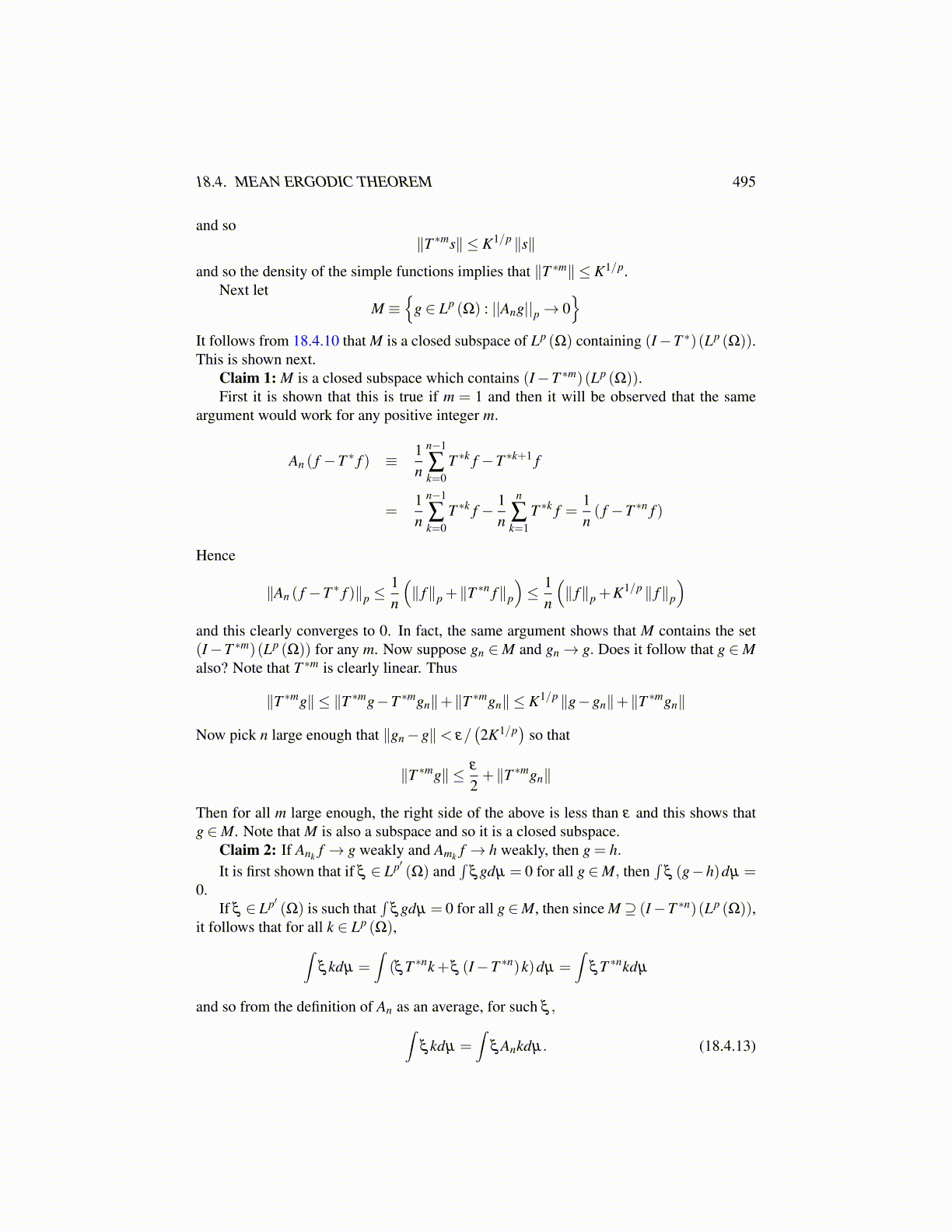
18.4. MEAN ERGODIC THEOREM 495
and so∥T ∗ms∥ ≤ K1/p ∥s∥
and so the density of the simple functions implies that ∥T ∗m∥ ≤ K1/p.Next let
M ≡{
g ∈ Lp (Ω) : ||Ang||p→ 0}
It follows from 18.4.10 that M is a closed subspace of Lp (Ω) containing (I−T ∗)(Lp (Ω)).This is shown next.
Claim 1: M is a closed subspace which contains (I−T ∗m)(Lp (Ω)).First it is shown that this is true if m = 1 and then it will be observed that the same
argument would work for any positive integer m.
An ( f −T ∗ f ) ≡ 1n
n−1
∑k=0
T ∗k f −T ∗k+1 f
=1n
n−1
∑k=0
T ∗k f − 1n
n
∑k=1
T ∗k f =1n( f −T ∗n f )
Hence
∥An ( f −T ∗ f )∥p ≤1n
(∥ f∥p +∥T
∗n f∥p
)≤ 1
n
(∥ f∥p +K1/p ∥ f∥p
)and this clearly converges to 0. In fact, the same argument shows that M contains the set(I−T ∗m)(Lp (Ω)) for any m. Now suppose gn ∈M and gn→ g. Does it follow that g ∈Malso? Note that T ∗m is clearly linear. Thus
∥T ∗mg∥ ≤ ∥T ∗mg−T ∗mgn∥+∥T ∗mgn∥ ≤ K1/p ∥g−gn∥+∥T ∗mgn∥
Now pick n large enough that ∥gn−g∥< ε/(2K1/p
)so that
∥T ∗mg∥ ≤ ε
2+∥T ∗mgn∥
Then for all m large enough, the right side of the above is less than ε and this shows thatg ∈M. Note that M is also a subspace and so it is a closed subspace.
Claim 2: If Ank f → g weakly and Amk f → h weakly, then g = h.It is first shown that if ξ ∈ Lp′ (Ω) and
∫ξ gdµ = 0 for all g ∈M, then
∫ξ (g−h)dµ =
0.If ξ ∈ Lp′ (Ω) is such that
∫ξ gdµ = 0 for all g∈M, then since M ⊇ (I−T ∗n)(Lp (Ω)),
it follows that for all k ∈ Lp (Ω),∫ξ kdµ =
∫(ξ T ∗nk+ξ (I−T ∗n)k)dµ =
∫ξ T ∗nkdµ
and so from the definition of An as an average, for such ξ ,∫ξ kdµ =
∫ξ Ankdµ. (18.4.13)